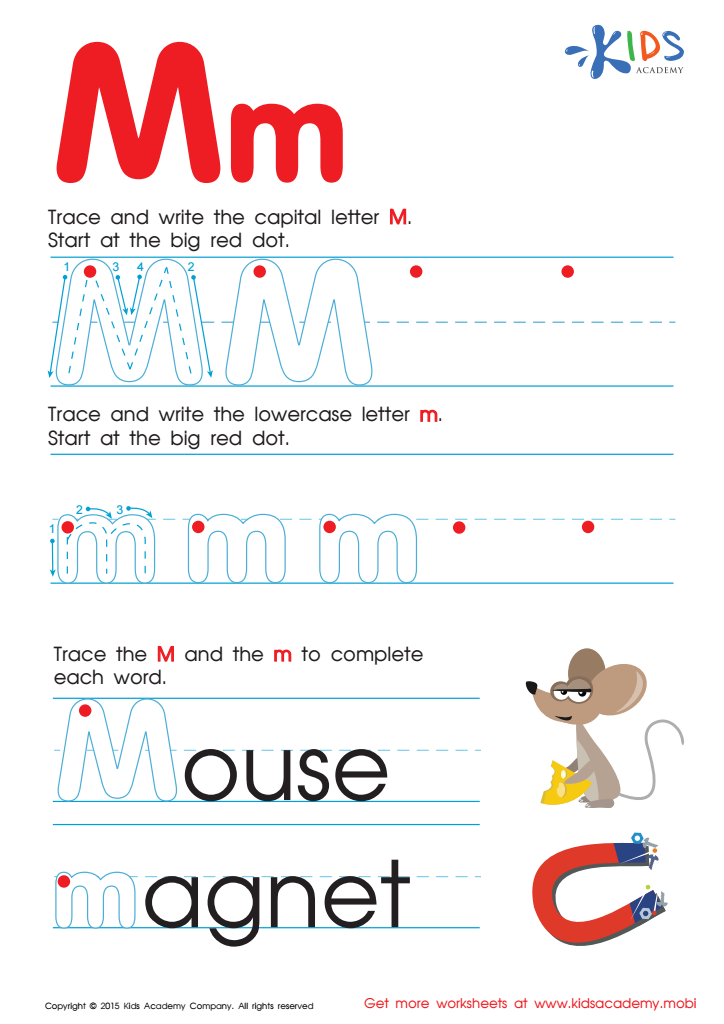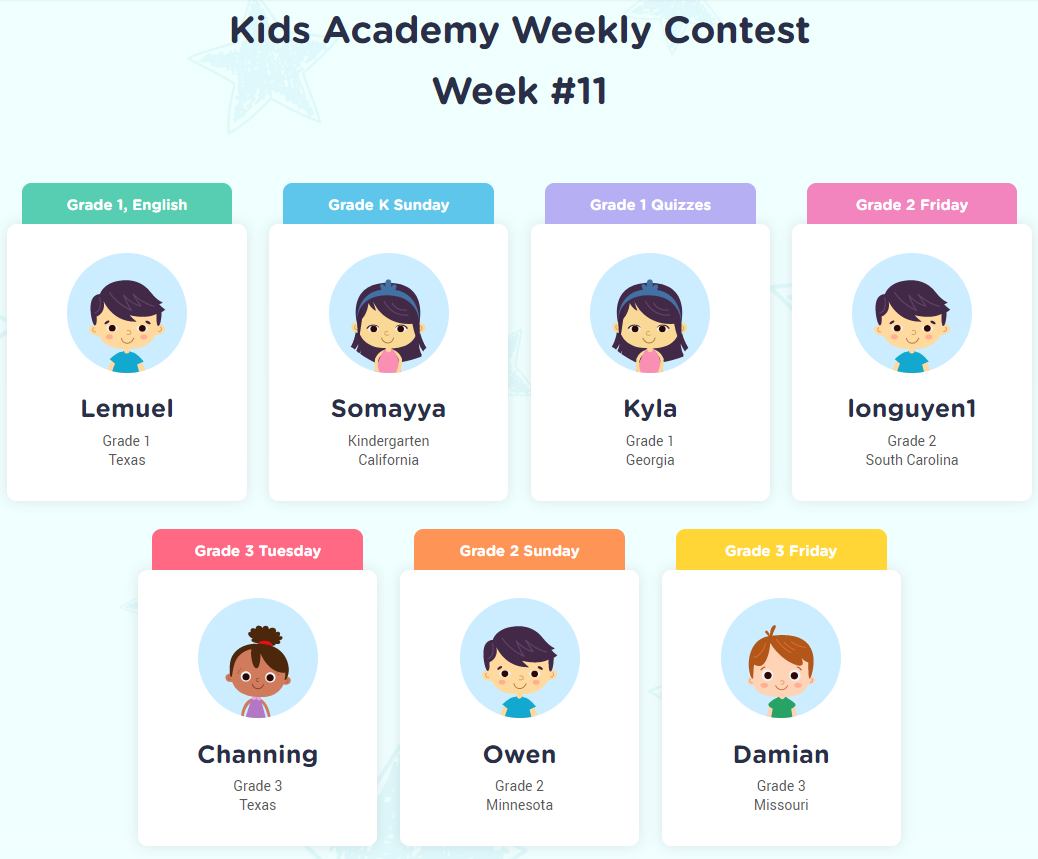Letter "M" tracing Worksheets for Kids
1 filtered results
-
From - To


Letter M Tracing Page
Question/Answer
Why is the Letter "M" tracing skill important for Kindergarten students?
The Letter "M" tracing skill is important for Kindergarten students because it helps develop their fine motor skills, enhances hand-eye coordination, and lays the foundation for proper handwriting techniques. It also supports their ability to recognize and write the letter 'M', an essential skill in learning to read and write, contributing to their overall literacy development.
How to test a Kindergarten student’s Letter "M" tracing skills?
To test a Kindergarten student's Letter "M" tracing skills, provide them with a worksheet containing dotted or faint outlines of the letter "M" in both uppercase and lowercase. Observe and evaluate their ability to trace the letters accurately, following the correct stroke order, and assess the steadiness of their lines and overall resemblance to the standard letter shapes.
How does the mastery of the Letter "M" tracing skill affect a student's performance at an early age?
Mastery of the Letter "M" tracing skill at an early age can significantly impact a student's performance by enhancing their fine motor skills, improving hand-eye coordination, and building a foundation for effective handwriting. This skill contributes to their ability to write other letters, words, and eventually sentences, directly influencing their literacy development and academic success in reading and writing activities.
 Assign to the classroom
Assign to the classroom












